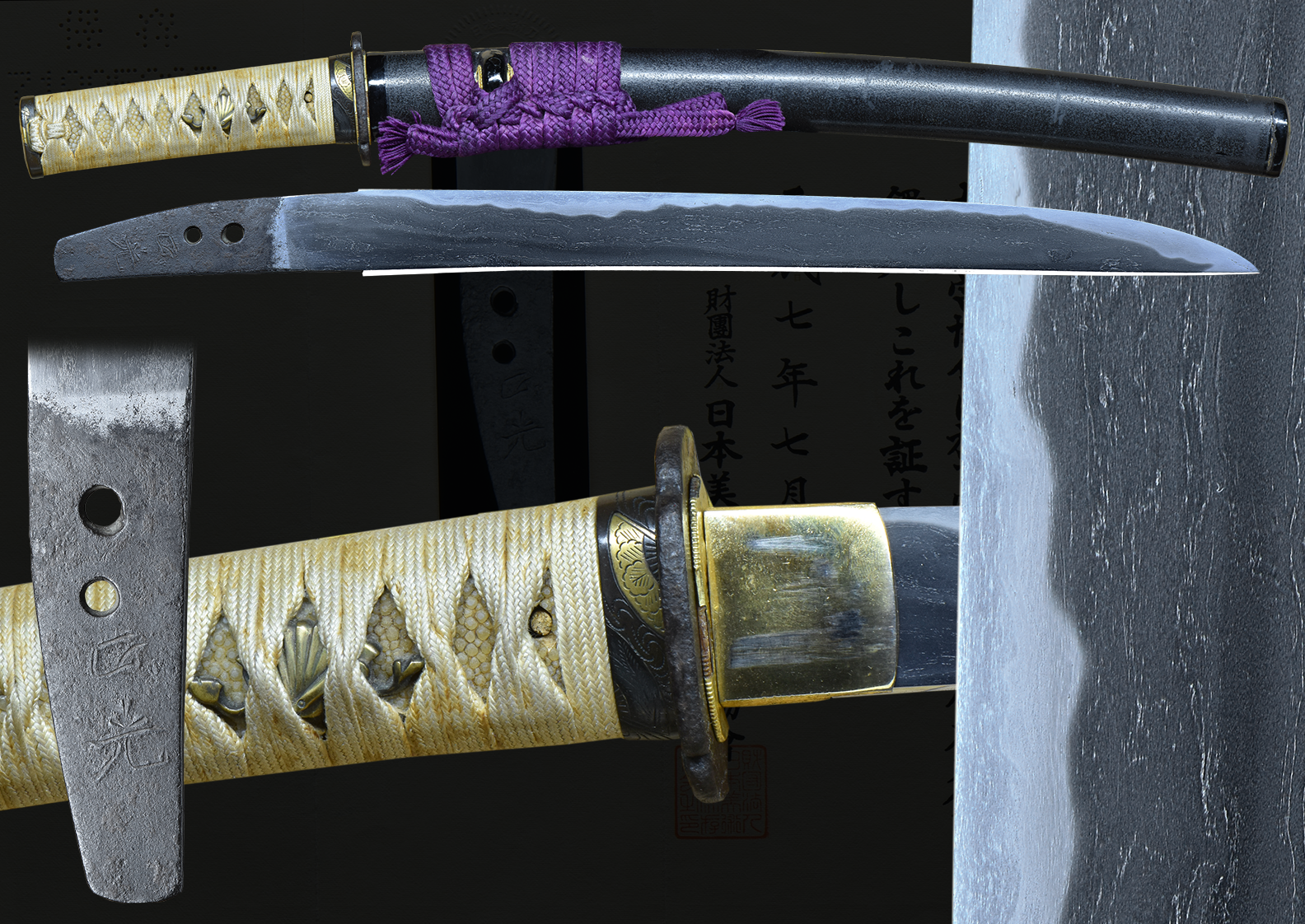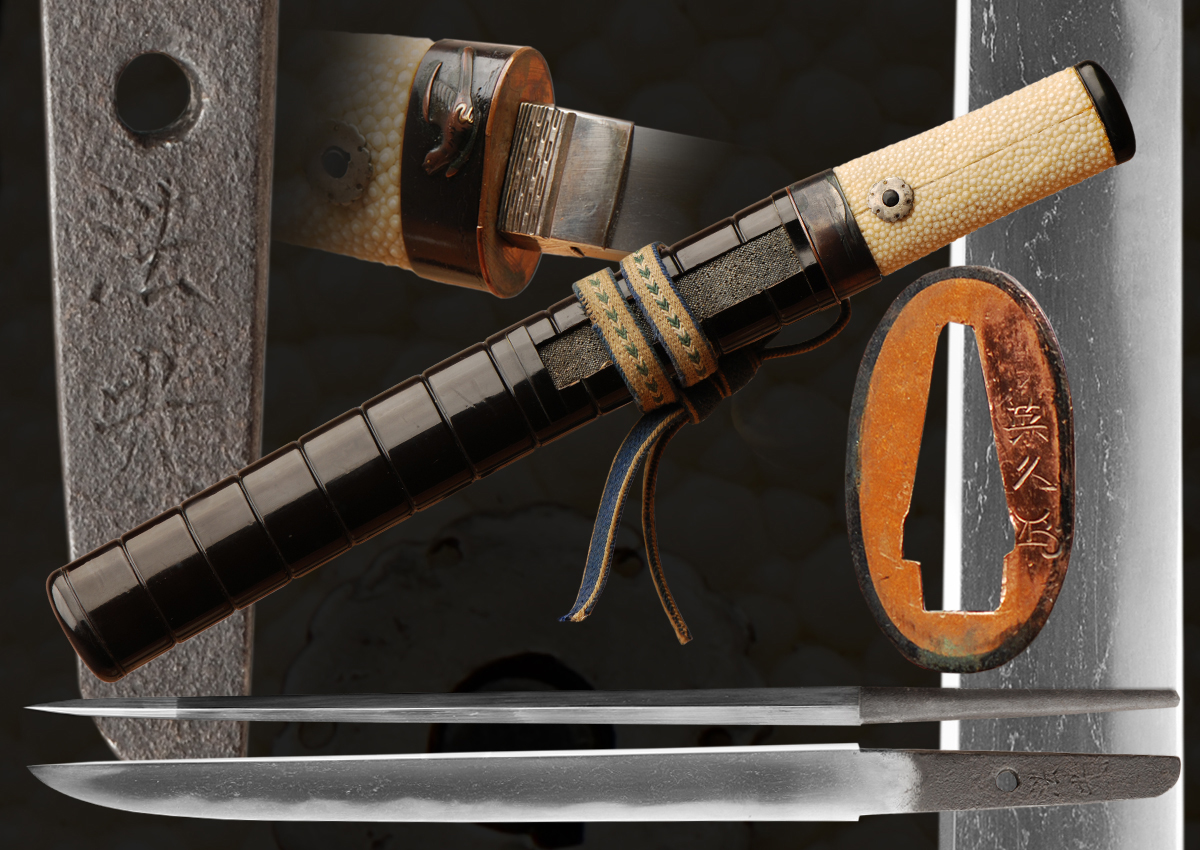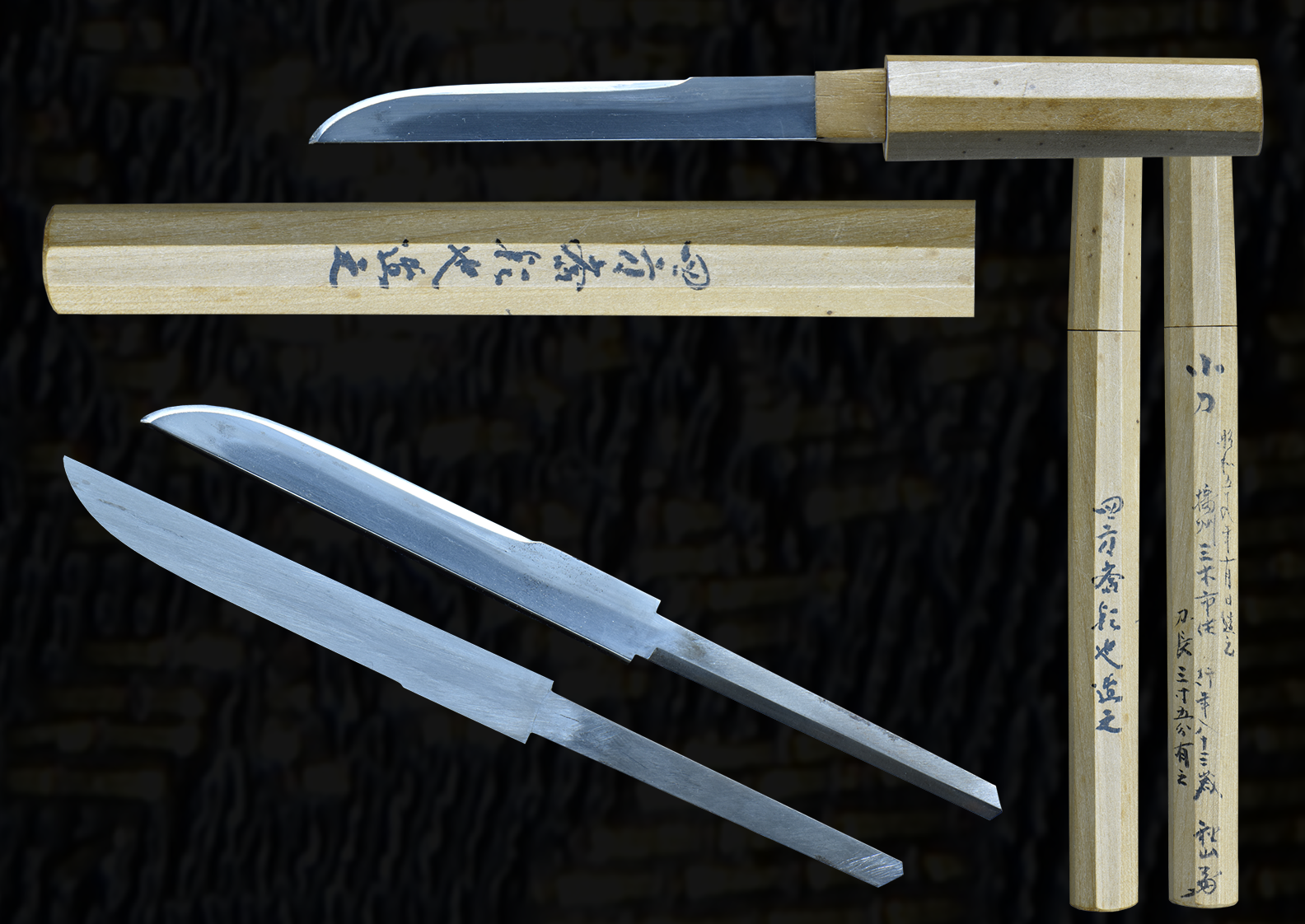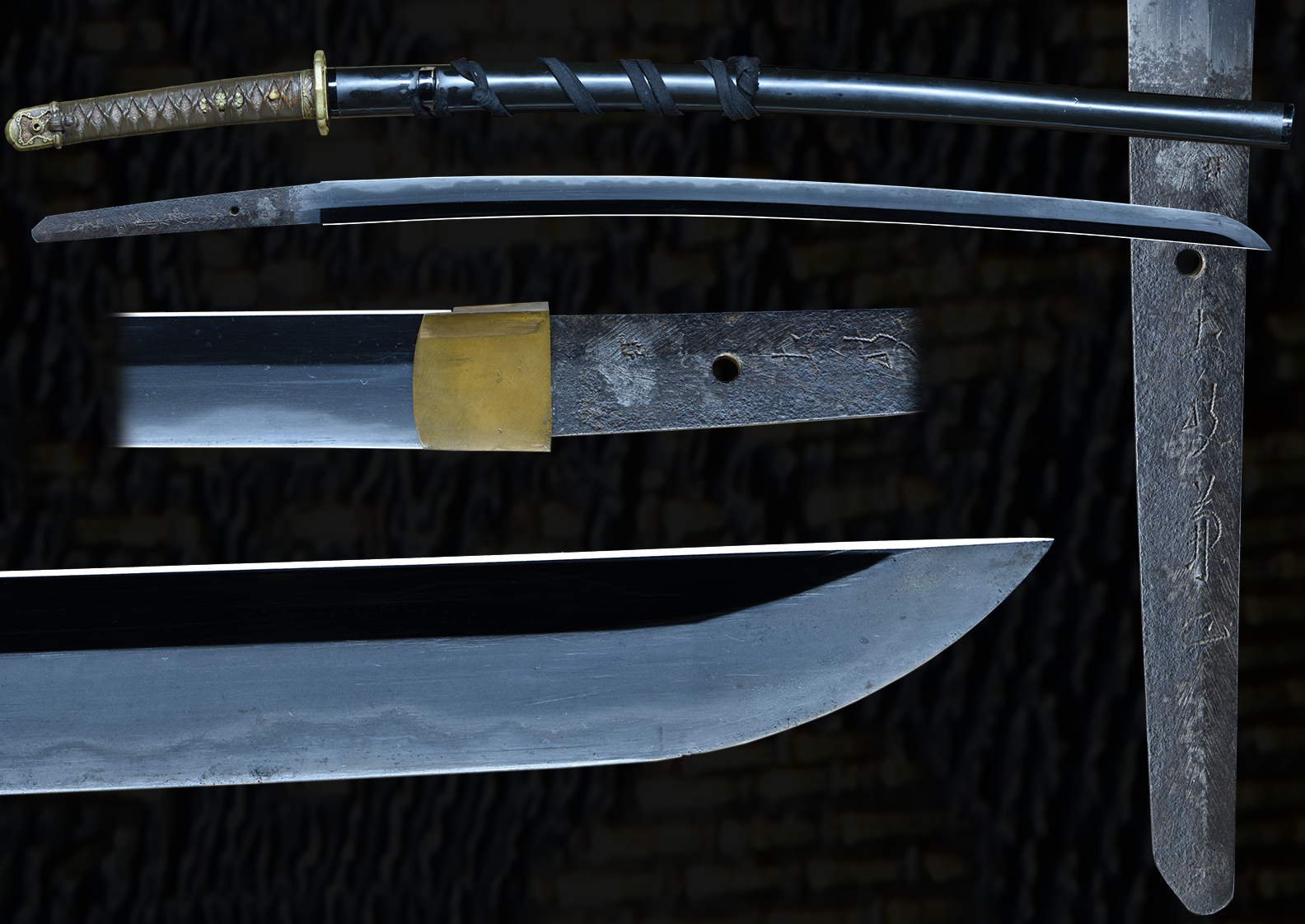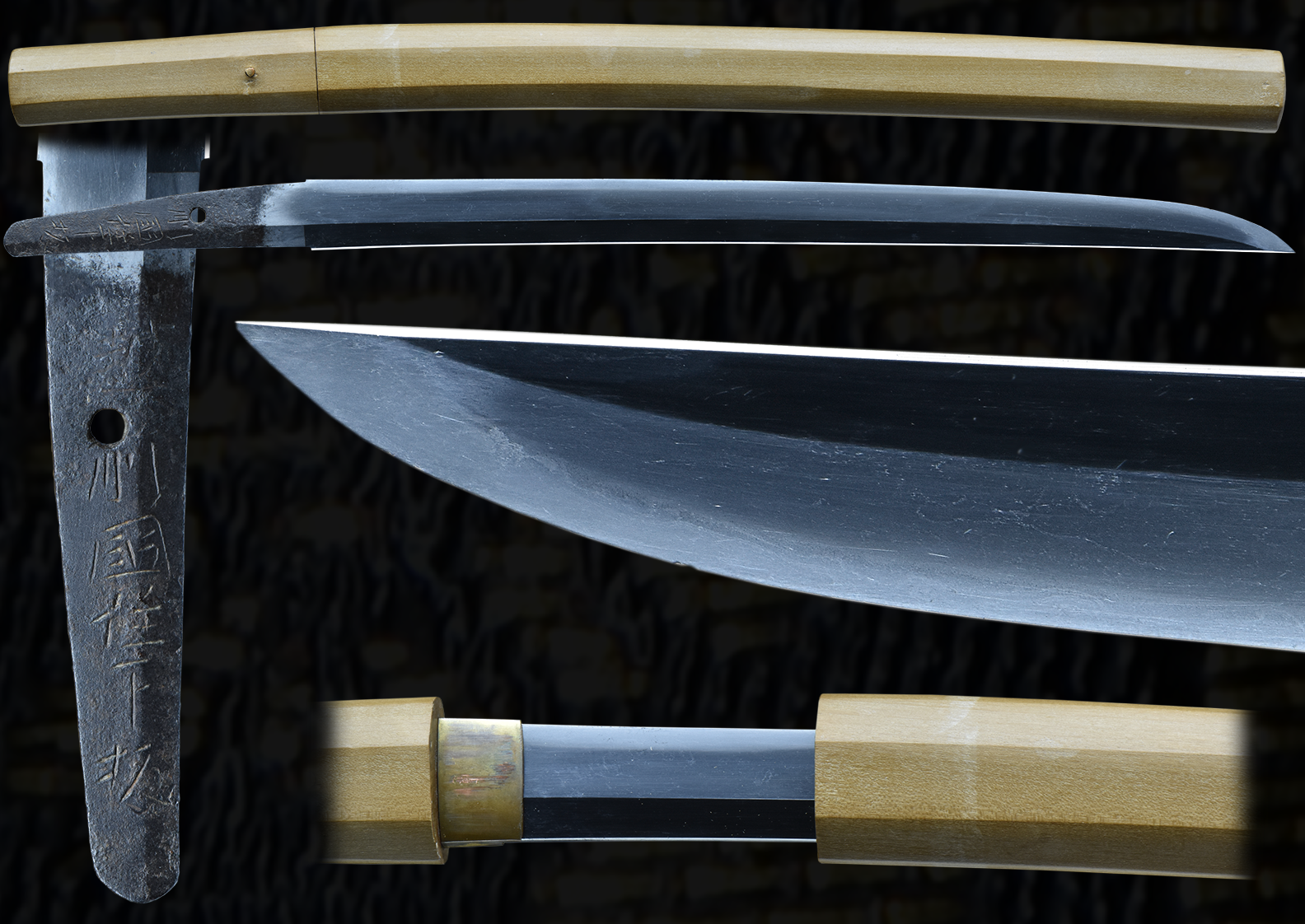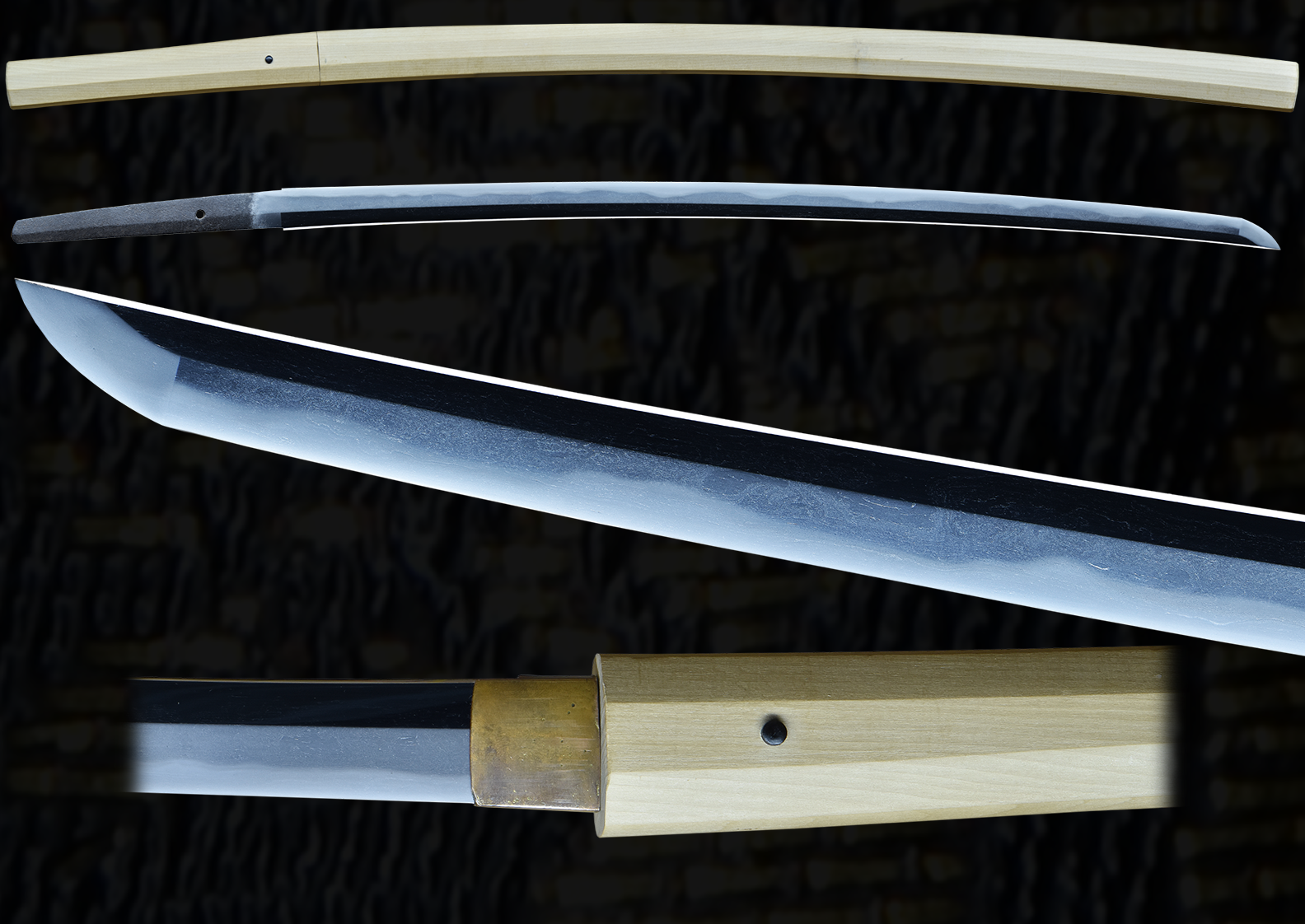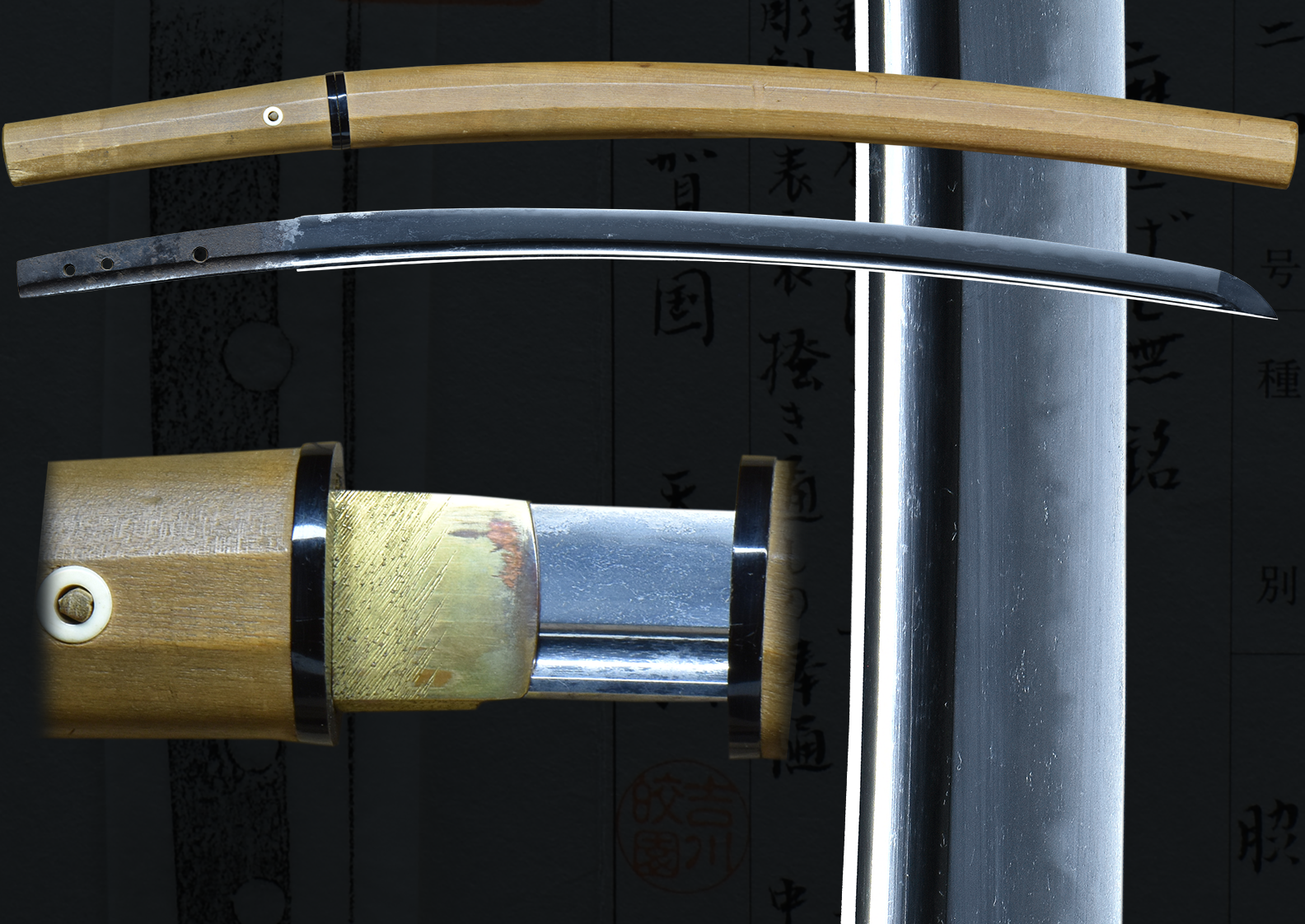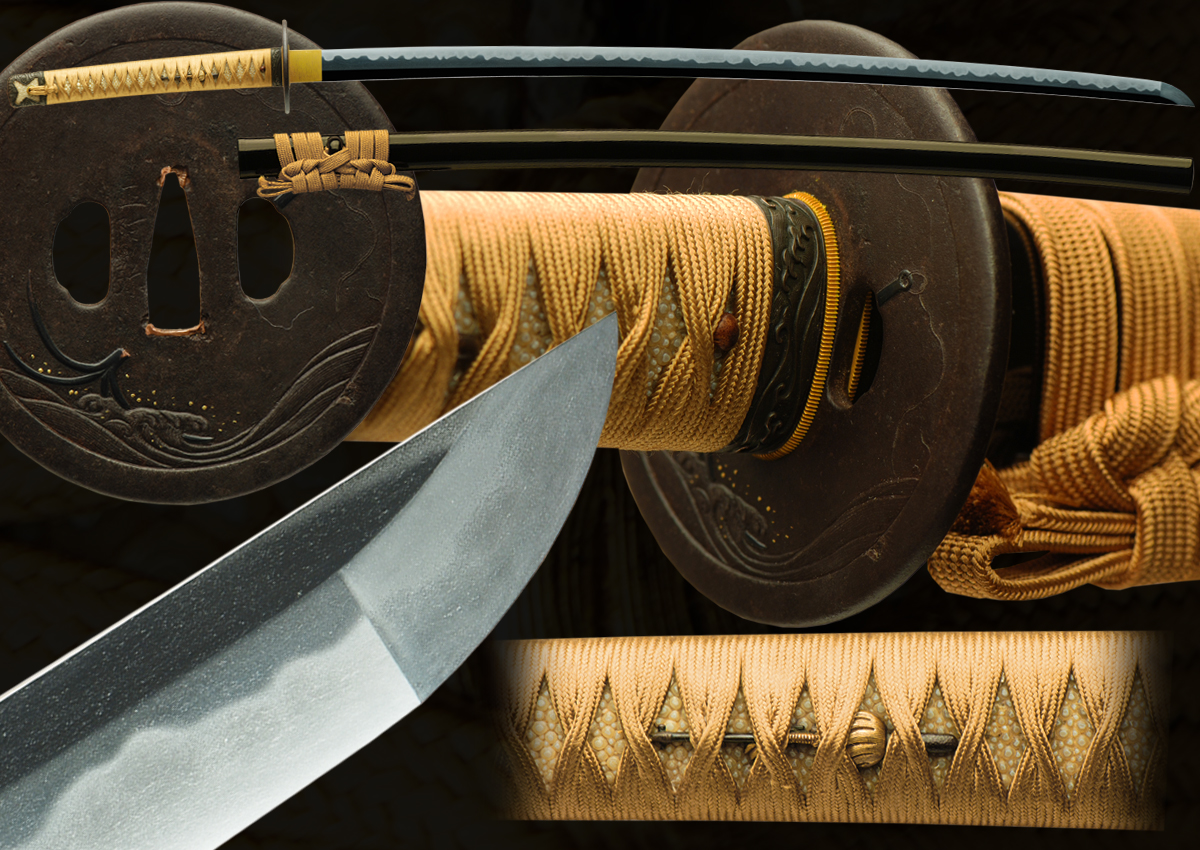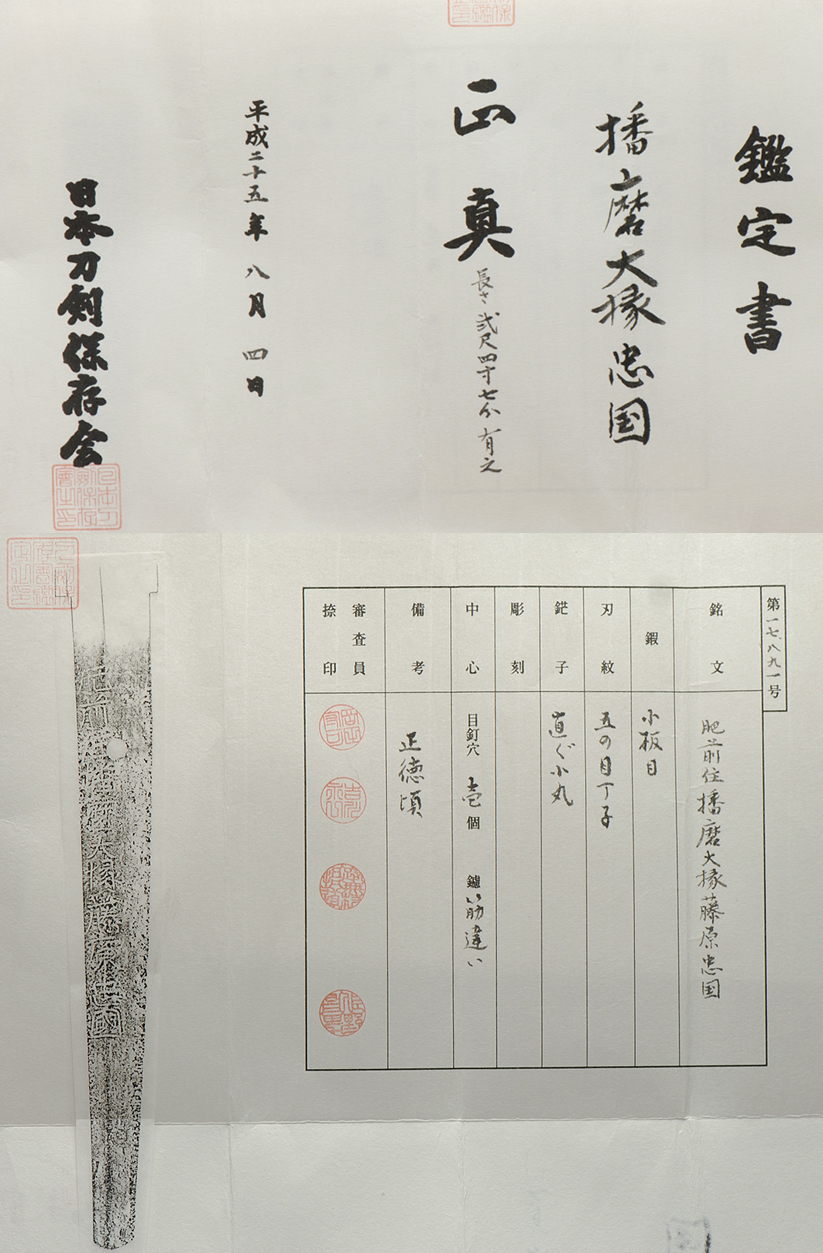The Hizen Tadayoshi school of sword smith’s needs no introduction, and are highly prized worldwide.
It all began with the Shodai Tadayoshi who was born in 1572, and known as Hashimoto Shinsaemonjo. Shodai Tadayoshi at age 25 became an apprentice to Umetada Myoju in Kyoto, who is known as the founder of the Shinto Sword. The “Tada” character was given to him by Umetada. After a three year apprenticeship Tadayoshi returned to his home in Hizen Province, where he set up the Hizen Tadayoshi Kaji. The Hizen Tadayoshi Kaji extended through nine mainline generations, ending with the death of the 9th generation Hizen Tadayoshi in 1880.
Roger Robertshaw, author of the book “The School of Tadayoshi”, is one of the foremost authorities and collectors of the Hizen Tadayoshi School. In his book, Mr. Robertshaw states, “The Tadayoshi line were the mainline swordsmiths, but equally as good works were produced by their family and students such as Tadakuni and their descendents.” As well he states, “Anyone who has had the chance to handle the works of Tadakuni will readily attest to their quality. Blades by this master will immediately impress you as awesome and powerful weapons.
The 1st generation or Shodai Hizen Tadakuni was the son of Hizen Yoshiie. Hizen Yoshiie, the brother and student of Shodai Tadayoshi, worked c. 1625, and his works were rated Josaku. Hizen Tadakuni, was known to have produced swords of equal quality of any the mainline Tadayoshi smith’s. Tadakuni’s works were rated Josaku by Fujishiro for his skill and Wazamono in the “Kokin Kaji Bikosen” by Yamada Asauemon Yoshichika
TADAKUNI (忠国), 2nd Jōkyō (貞享, 1684-1688), Inaba – “Shinano no Daijō Fujiwara Tadakuni” (信濃大掾藤原忠国), “Shinano no Daijō Tadakuni” (信濃大掾忠国), real name Yamamoto Hachirōdayū (山本八郎太夫), he forged in the seventh year of Hōei (宝永, 1710) a blade which was presented to the Korean ambassador, he died in the eleventh month of the fifth year of Kyōhō (享保, 1720) at the age of 70, dense itame or also a standing-out itame mixed with ō-hada, the hamon is mostly a chū-suguha in ko-nie-deki, he signed the inner part of the character for “kuni” in the more common variant (或), we know blades from the Manji (万治, 1658-1661) to the Kyōhō era, wazamono, chūjō-saku
This blade is typical Tadakuni. The Nioiguchi is thick and loaded with wonderful hataraki/activaty.
And the Gunome Midare Hamon is a beauty to behold.
The koshirae is a beautiful set. These are a matching set of a wave motif with nautical theme of a shakudo anchor with splashes of water appearing in gold. There is a beautiful saya of a black lacquer.. There is also a gold washed habaki as well as gold tsuka-ito and sageo. There is shirasaya to protect the polish and tsunagi for the mounts.
- Mei: Hizen-jū Harima no Daijō Fujiwara Tadakuni (肥前住播磨大掾藤原忠国)
- Date: Shōtoku (正徳, 1711-17160
- Nagasa: 29-1/2 inches
- Sori: 12.0 mm
- Width at the ha-machi: 30.0mm
- Width at the yokote: 20.1 mm
- Thickness at the mune-machi: 7.5 mm
- Construction: Shinogi zukuri
- Mune: Iori
- Nakago: Ubu
- Kitae: ko-Itame
- Hamon: Midare Gunome-Chogi
- Boshi: sugu with ko-maru kaeri
- Condition: fresh sashikomi polish
Email us if your interested in this item and remember to include the order number for this item: fss-762.
kantei-sho (鑑定書) – Appraisal Harima no Daijō Tadakuni (播磨大掾忠国)
shôshin (正真) – Authentic
nagasa 2 shaku 4 sun 7 bu kore ari (長さ弐尺四寸七分有之) – Blade length ~ 74.8 cm
Heisei 25 nen 8 gatsu 4 nichi (平成二十五年八月四日) – August 4, 2013 Nihon Tôken Hozon Kai (日本刀剣保存会) – NTHK
No 17891
meibun (銘文) – Signature:Hizen-jū Harima no Daijō Fujiwara Tadakuni (肥前住播磨大掾藤原忠国)
kitae (鍛) – Forging: ko-itame
hamon (刃紋) – Hardening: gunome-choji
bôshi (鋩子) – Hardening in tip: sugu with a ko-maru-kaeri
chôkoku (彫刻) – Engravings:none
nakago (中心) – Tang: mekugi-ana (目釘穴) 1, yasurime (鑢): sujikai
bikô (備考) – Remarks: around Shōtoku (正徳, 1711-1716)
shinsa’in natsu’in (審査員捺印) – Seals of Judges: 4 seals
For Sale
